The man behind the notorious Siberian cult ‘The Church of the Last Testament’
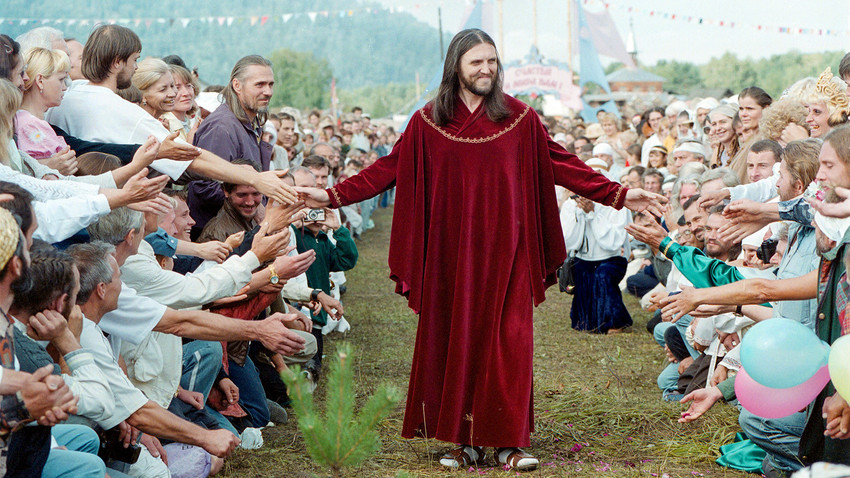
“Lyuba, a Buryat girl from the Chita Region, decided to live in harmony with nature and in early spring went into the taiga unclothed and three days later was found frozen to death. Ira Goldina refused treatment and died of advanced breast cancer. Kapitolina had cancer and treated it by starving herself and died of malnutrition. Nina Mikova killed herself under a portrait of Vissarion. Arkasha Drozdov died aged 15 months from a pathological condition that was treated too late.”
This summary of tragic deaths is not a crime news round-up. It is just a small part of a list recreated from memory on social media forums by former followers of the Church of the Last Testament and its “savior”, Sergey Torop, known as Vissarion.
For almost 30 years the Torop-Vissarion commune has existed in the middle of the taiga as a quasi separate state - it has lived quietly according to its own customs and rules, having fenced itself off from the rest of the world behind a barrier gate, security guards and dense forests. Information about life inside the settlement was mainly brought to the outside world by people who left the commune after becoming disillusioned with the manufactured faith of former traffic cop Torop and wanted to return to society. But there are few such people. The taiga hermits have carefully guarded their self-isolation and tried not to make a fuss, even when they realized that things were not going right. Now their utopia has come to an end.
Incest, pedophilia, suicide, murder and other crimes have suddenly come to the surface. Outside, observers throw their hands in the air, perplexed: How is it that in the Russian Federation, in an area about two-thirds the size of Belgium, such a community could exist for such a length of time - and nobody intervened or even noticed?
Jesus seeks contact with UFOs
After his dismissal from the traffic police, Sergey Torop became a regular at a Siberian UFO club and for some time was “seeking contact” in so-called anomalous zones. But looking for UFOs did not become his idée fixe. Torop turned his attention to methods of exerting psychological influence on people. He attended several courses in Moscow that were popular in the 1990s and delivered his first sermon on air from a small television studio in Siberia.
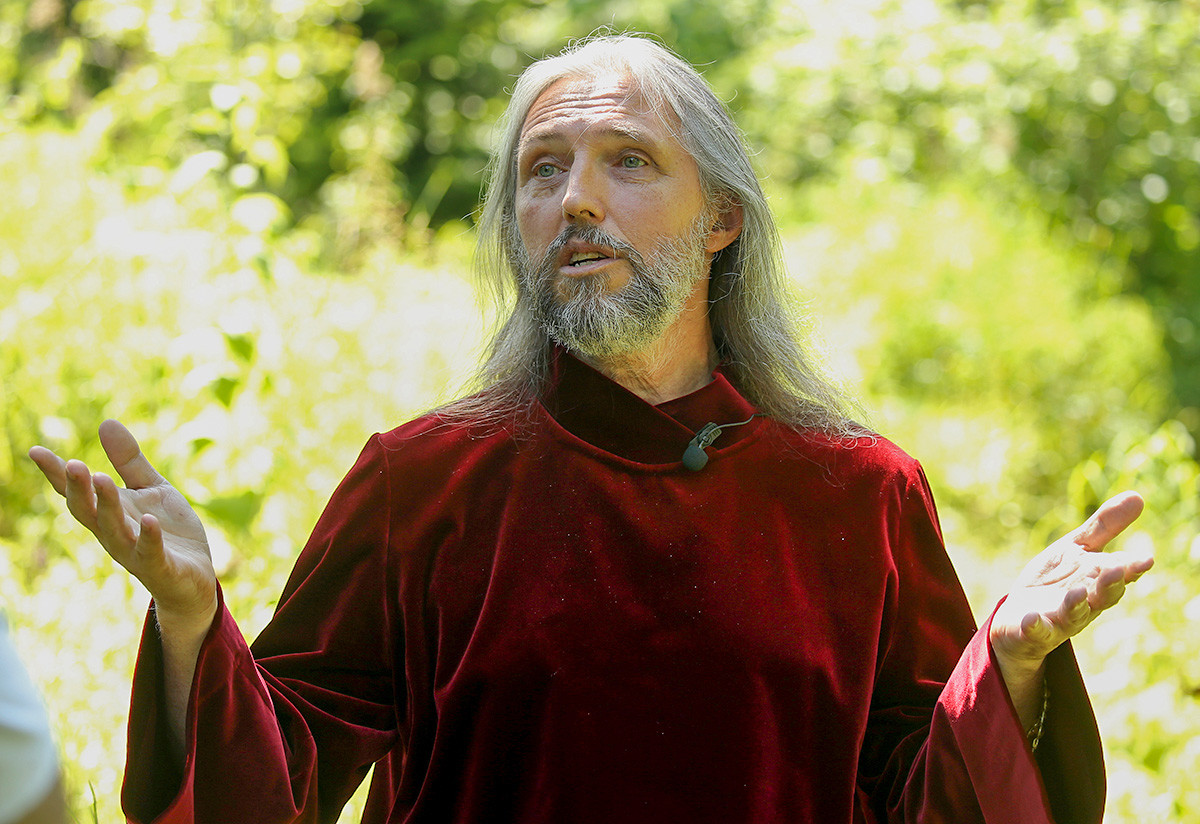
Sergey Torop
Alexander Ryumin/TASSIt was 1991 when the former metal worker, neighbourhood policeman and traffic cop underwent a “spiritual awakening” and proclaimed himself to be a reincarnation of Jesus Christ. “Unless I become world famous I won’t be able to live on this Earth,” he said in one of his letters home at the age of 18. And popularity did seek him out. Against the background of economic collapse, the disintegration of the USSR, broken hopes and discredited values, the ideas of the 30-year-old “Jesus” about universal happiness in the remote taiga and the approaching end of the world found their audience. In his early sermons, he introduced revisions to the New Testament and told the “true story of the First Coming”.
In the following two years, he travelled around half of Russia, the Soviet republics and several European countries with money from donations, attracting a faithful flock and implausible rumors. Yelena Melnikova listened to all the sermons of Vissarion, but couldn’t understand him. But her husband was hooked.
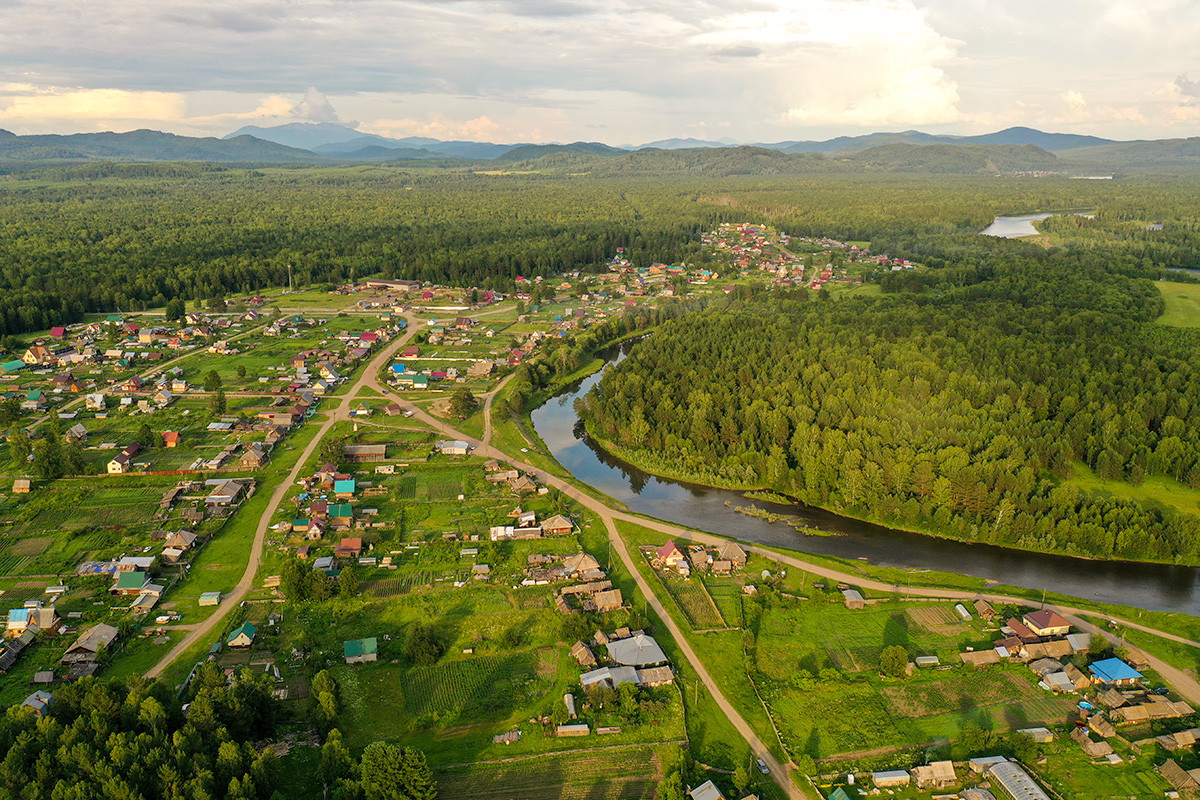
“In particular, his manner of communicating his message drove me mad. Going round in circles and beating about the bush. As in Gypsy hypnosis, when they start touching you and making a lot of noise and you get confused. All his sermons were long-winded and incoherent. He tried to instill the idea in people that they should cut themselves off from the outside world and sever ties with family and relatives. And the more stressed a person was, the more susceptible he or she was to his influence. I realized straight away that my husband would go - with or without me,” Yelena said. In May 1994, with two children and a third on the way, they sold their apartment in Novosibirsk and moved to the south of Krasnoyarsk Territory. There, near Lake Tiberkul and Mount Sukhaya, both of which he proclaimed to be sacred, Vissarion had set up a commune, while the Russian Ministry of Justice officially registered his Church of the Last Testament as a religious organization.
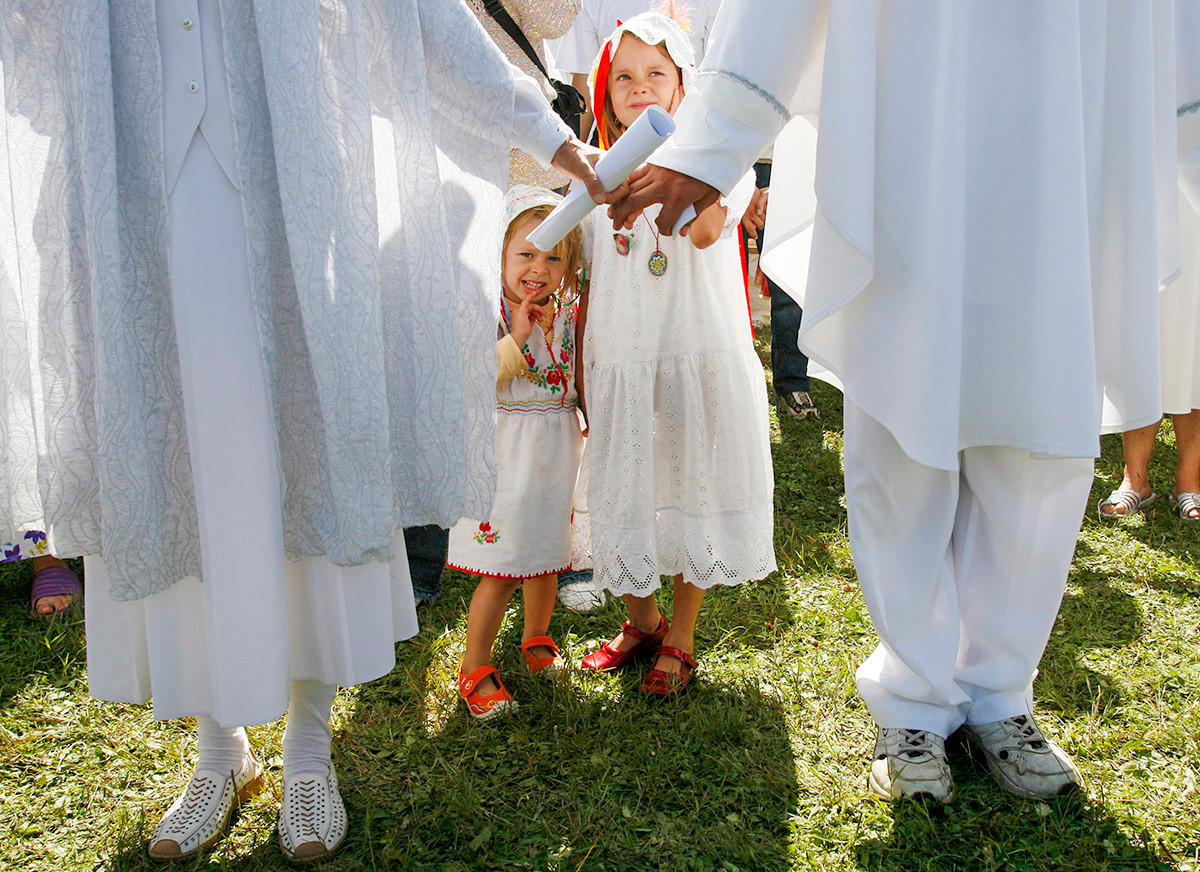
“To my surprise, Vissarion seemed like a sensible person and didn’t ask for anything. On the contrary, he advised me to shape my own destiny and, most importantly, not to do evil,” recalls another former follower, Samara resident Mikhail Ilyin. And, true, Vissarion didn’t ask for anything. At the time, about 5,000 people headed for the taiga to settle there and build ‘Sun City’ on the “sacred” mountain. Like the Melnikov family, many sold their property and other assets and put their money in the common “kitty”. Apparently of their own accord. But very soon, Vissarion started imposing prohibitions.
Food prohibitions and polygamy
The Church of the Last Testament could find a justification for any way of life and dogma. If only because it mixed together a whole assortment of world religions and religious practices - from Hinduism and Buddhism to apocalypticism and the atheistic teachings of Karl Marx. So when Vissarion “handed down” yet another prohibition, nobody doubted that his decision was correct.

Restrictions on what people could eat began in the commune almost immediately. Meat was prohibited, as was all animal protein - milk, eggs, etc. The followers believed that after an animal is slaughtered an “aggressive energy” remains in its cells. Vissarion’s chauffeur drove around the villages where followers lived and proclaimed: “From August 1 sugar is poison.” In September 1994, prohibitions were imposed on vegetable oil, tea, semolina and a number of grains. Then, it was the turn of leavened bread. Exceptions were only made for pregnant women. By 1995, people could only talk of food. The permitted diet included potatoes, honey, grains, vegetables, mushrooms and flatbreads. The Vissarionites suffered, but endured.
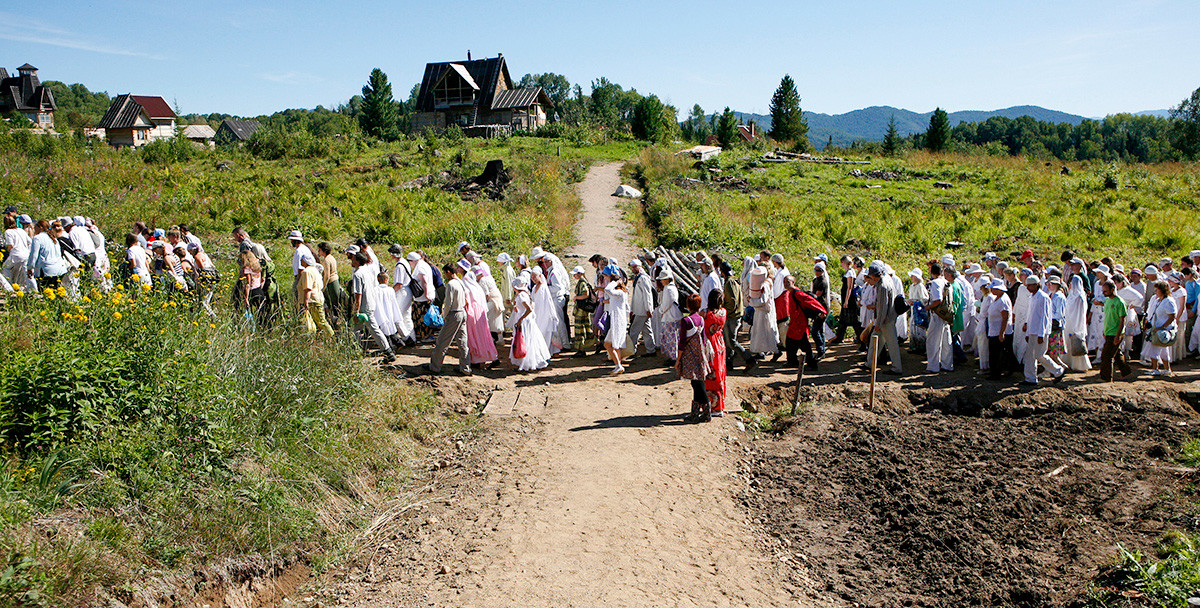
Vissarion himself did not appear in public frequently and when he did, it was in a specially-designated Place of Confluence - at a distance. He lived on the hill along with his closest followers or “apostles”. All newcomers to the commune were met and a decision was taken whether to accommodate them in the village, or on the outskirts if they did not receiveVissarion’s blessing. “Salvation” was his key idea. The trouble was that the “savior” predicted the end of the world, set specific dates and when the end did not come, he would literally throw his hands in the air uttering the words “I didn’t promise you anything” and then predicted a new Apocalypse.
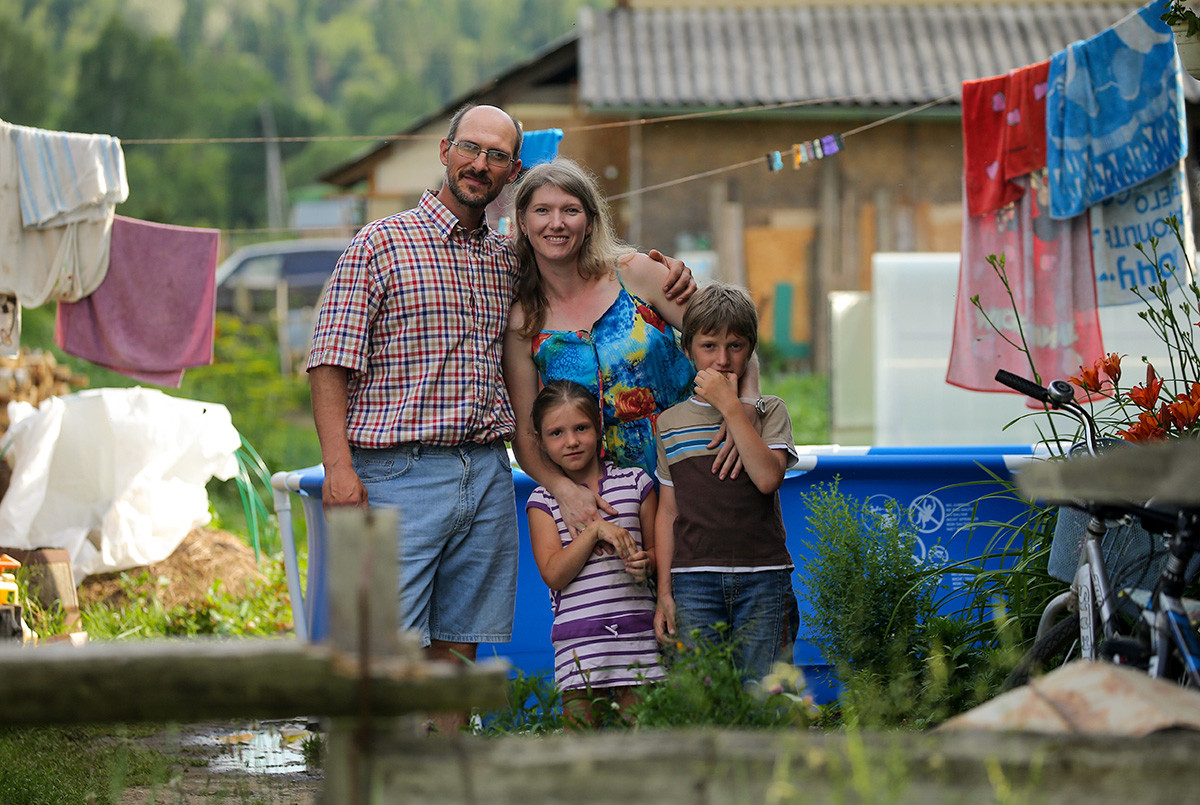
Violinist Dimitr Khetemov, 42, a follower of the Church of the Last Testament religious movement, with his wife Natalya, daughter Sofia, 6, and son Alexander, 9.
Alexander Ryumin/TASSIn August 1999, he gave the sermon he called: ‘I want to show you how to love in a beautiful way’. And he asserted that a man can have as many wives as he wants “for the sake of the submissiveness of women”. From that moment, love triangles began to appear in the commune and men were allowed to change their wives. Some families could not bear this kind of psychological onslaught and fell apart. Then, Vissarion himself parted from his wife and took a new wife - a 16-year-old.
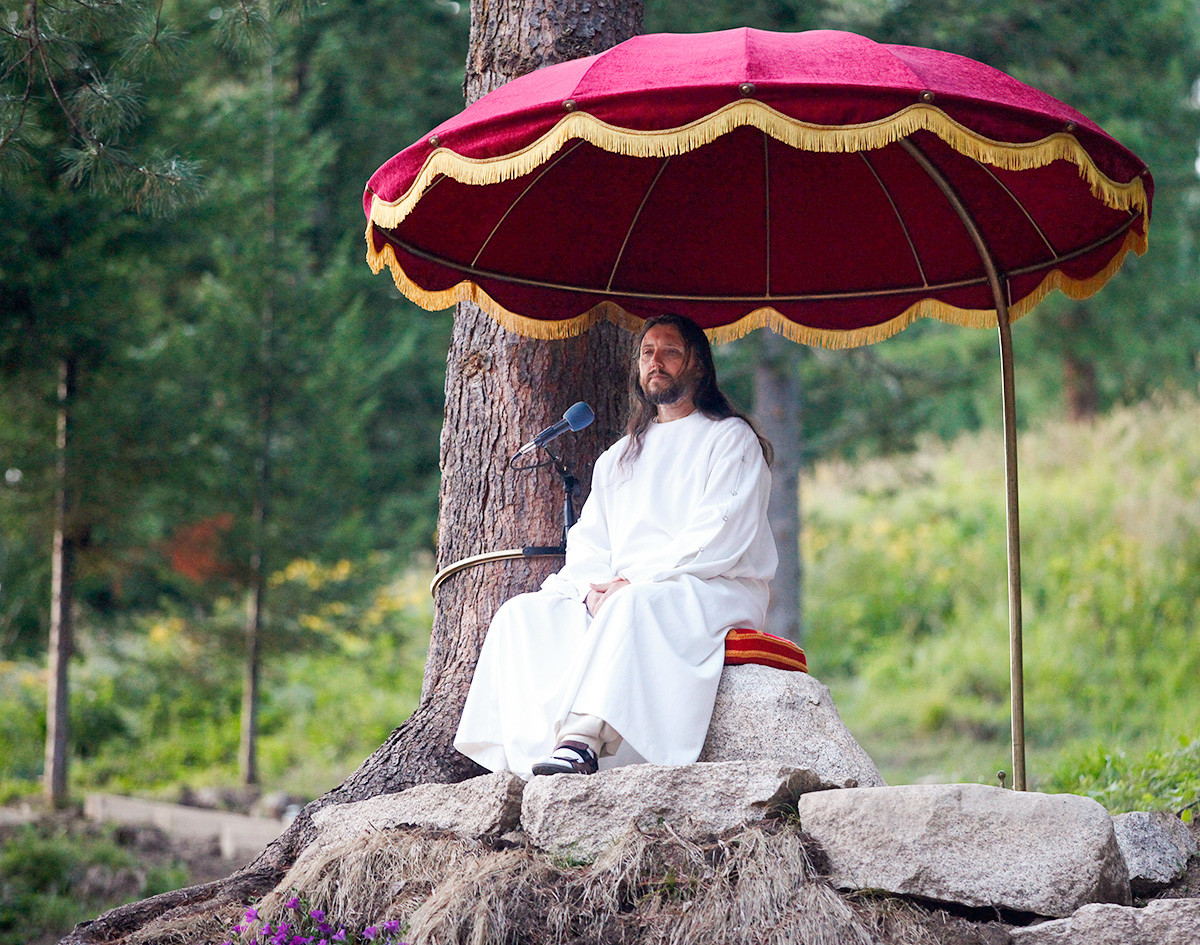
All this became intertwined with the established procedure of not seeking medical assistance and not permitting children to attend the village school. “I clearly remember this precept - it was No. 37 - which stated that all our ailments stem from spiritual disharmony. That is why the non-believer need not be treated yet and a believer need not be treated any longer,” Yelena says. With education it was the same logic - believers did not need much learning.
It wasn’t like this indefinitely, however. Vissarion knew that the times were changing, people were becoming different and the commune needed to change, too. Even in the taiga.
A transformation and case managers from the FSB
The Church of the Last Testament was already close to being banned once - at the turn of the century - when “all sorts of nasty stuff” began. Local doctors and teachers were behind a series of demands for a judicial investigation. But a prosecutor’s office probe into one such complaint was abruptly halted. Photographer Yury Kozyrev, who has been a regular visitor to the commune over the years, believes that the law enforcement authorities were seriously concerned at the time that any detentions could result in mass suicides: “Vissarion also grasped everything clearly: After this, the sect transformed itself into the Tiberkul eco-settlement and the matter was closed. So vegans live there - let them.”
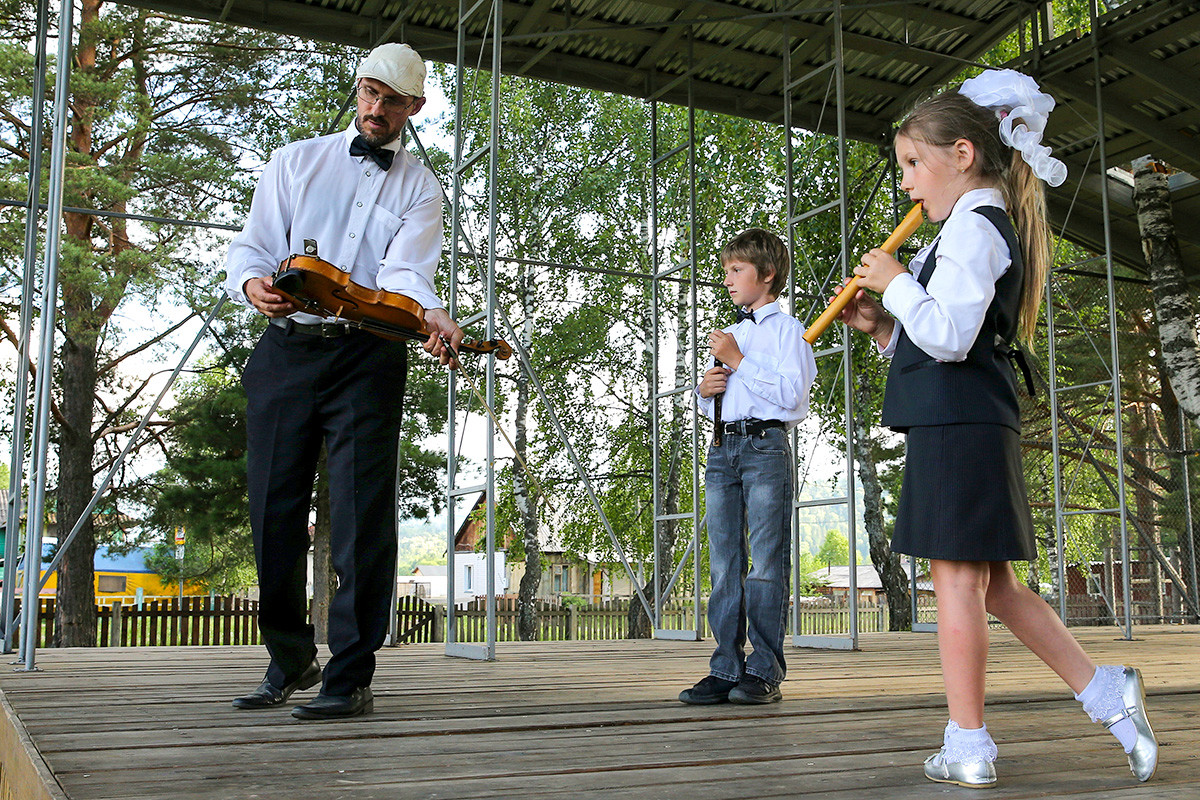
In reality, however, the commune never stopped being the object of scrutiny. According to Vadim Redkin, one of Visssarion’s first followers - he is responsible for “public relations” and for the commune’s official Facebook page - the church was assigned a “case manager” from the FSB’s district directorate from the very beginning. In actual fact, this never presented any serious nuisance for cult followers. “Businesslike relations” evolved with the FSB, he says. “In all these years, there has been a very large number of different case managers. I’ve been here since 1992,” says Redkin.
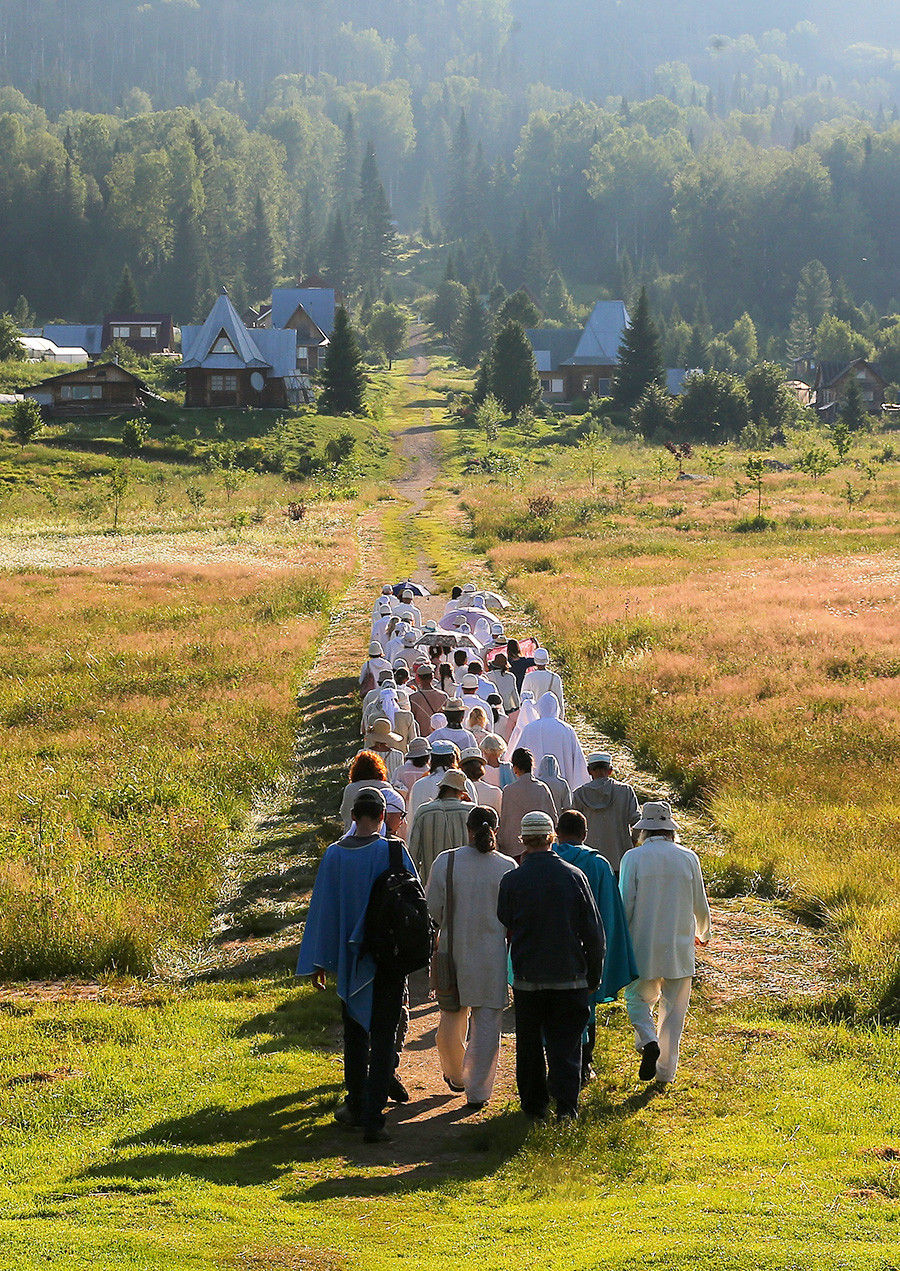
The local authorities had almost no concerns, either. This was aided by the fact that since the early 2000s, the commune’s rules began to be relaxed. Vissarion allowed mobile phones, TV-sets, satellite dishes and visits to the doctor. The commune opened its own schools for children, as well as inaugurating musical ensembles, recording studios and football and ice hockey teams. Slowly, it all began to look more like an eco-settlement than a sect.
Furthermore, the make-up of the ‘Vissarionites’ became less homogenous with the passing years: Fewer and fewer followers believed in the end of the world and more and more simply liked living in a commune with its own rules and laws - in an ecological settlement where everyone is “family”. Even those who were extremely sceptical of Vissarion stayed on in the commune. “He told us to shun money, but he himself would travel to Israel or to Taiwan for medical treatment. Why should Christ require medical treatment?!” said one of the “disillusioned” residents of the commune, Tatyana Kholyavko.
Outsiders began to be allowed into Sun City, something that would not have happened before, and Vissarionites began to actively infiltrate the local authorities and integrate with the local elite - they could supply premier felled timber for the construction of excellent and fine houses and “people with money” liked to hire them. Vissarion himself started addressing his flock not once a month, but once every four and he always said roughly the same thing - that the world would come to an end, but his followers would be saved.
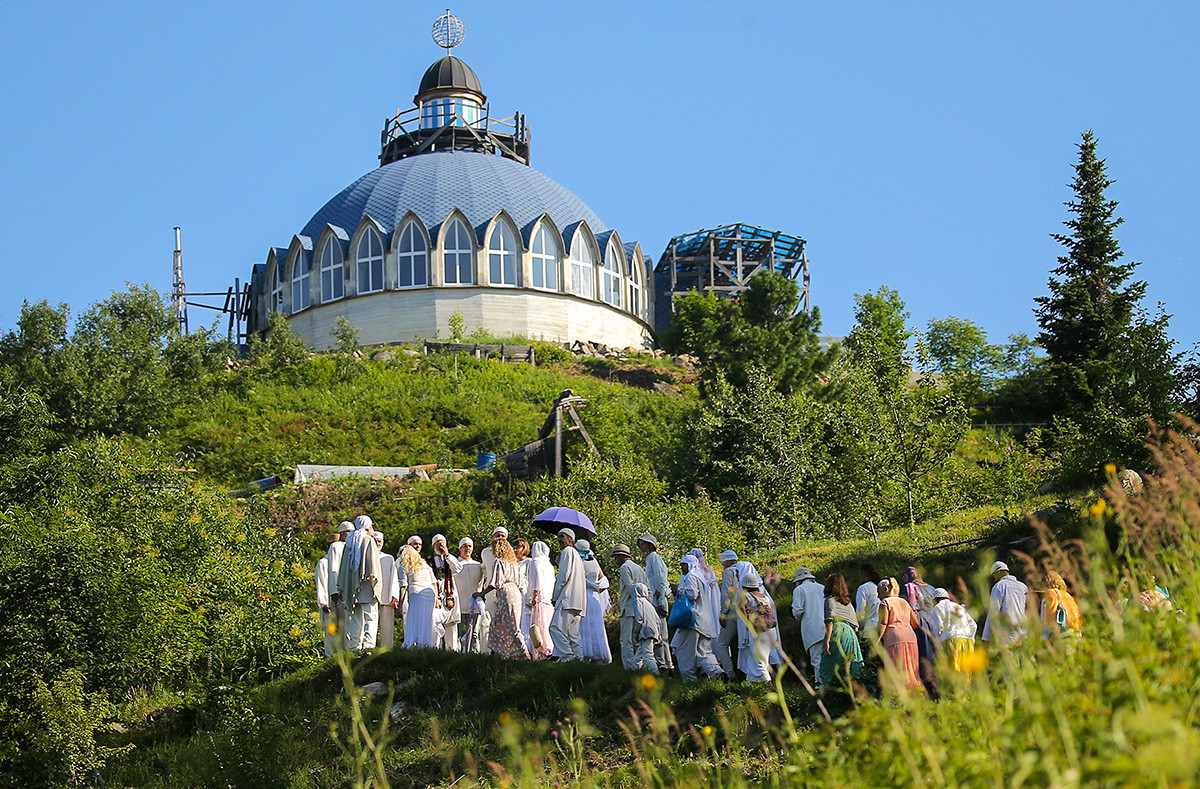
Vyachelav Osipov, head of one of the rural settlements in the Kuraginsky District, says he sees no problem with the commune. Quite the contrary, people were pleased to have them there: The Vissarionites worked a lot, they farmed, they provided a boost to the economy; thanks to them, the adjacent villages have not died out, land values have risen and the population has increased.
All upsides.
In the past two years, however, law enforcement bodies have started paying close attention to them.
A special forces raid with helicopters
It is all believed to have begun with the deaths through negligence of two infants in the families of cult followers. In summer 2018, investigators called on the Nazemtsev family to conduct a house search after the death of their 10-month-old son. The Karmanov family was also investigated at the same time after their child had died of pneumonia. Subsequently, a report on the federal channel REN TV also said that the discovery of the body of an infant was the reason why the commune was being “probed”.
A whole string of investigations ensued. According to Redkin, the commune found itself under “overt pressure”. All lines of inquiry were pursued: from psychological abuse, property fraud, ritual sex with minors and home births to illegal land use and the felling of stone pines. More than 300 followers were questioned in the year since the first searches.
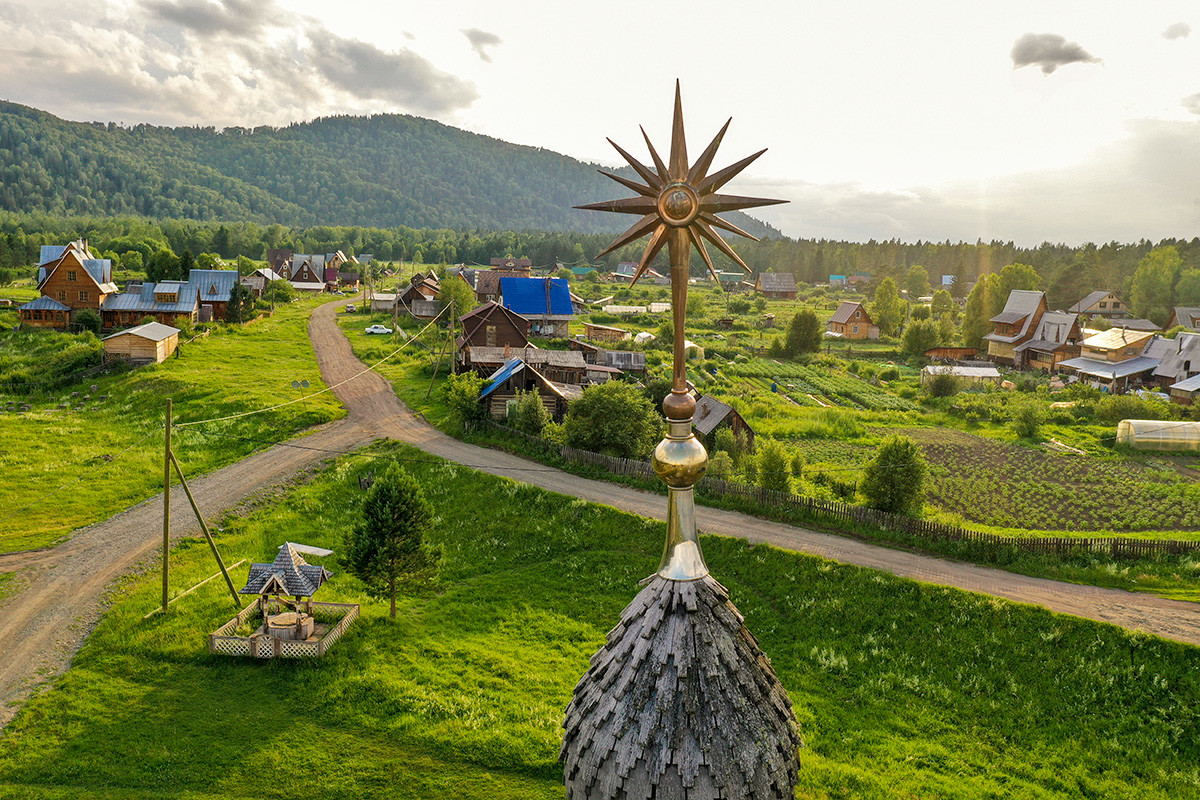
“In 2019, when it all kicked off, investigators would turn up and say: “That’s it. Your cover has gone up in smoke.” They were referring to our protection. “And all the top people will be arrested in the autumn.” That is what the FSB inspectors were telling the forestry people. The forestry people just repeated it to us,” Redkin recalls. The Novaya Gazeta publication also refers to the protection the commune may previously have enjoyed: “The recent resignation and arrest in Krasnoyarsk of regional forestry minister Dmitry Maslodudov may be linked to the searches and detentions in Sun City.”
But, there are also several other theories to explain why Sun City has become the object of scrutiny only now. In the course of so many years, the area has become the center of premier timber felling in Russia and the Vissarionites now believe they are being “squeezed out of business”. Another factor may have been a protest by local residents against tree felling and the construction of a road through neighboring localities previously untouched by civilization, in order to provide access to gold-mining areas.
In mid-September 2020, teams of FSB special forces arrived in the Krasnoyarsk taiga in helicopters and sealed off Sun City. Torop, Redkin and another organizer of the commune, Vladimir Vedernikov, were placed under arrest and the public prosecutor’s office demanded that the Church of the Last Testament religious organization - which has a membership of around 4,500 at the last count - should be banned. It is now up to the courts to rule on the matter.
If using any of Russia Beyond's content, partly or in full, always provide an active hyperlink to the original material.
Subscribe
to our newsletter!
Get the week's best stories straight to your inbox